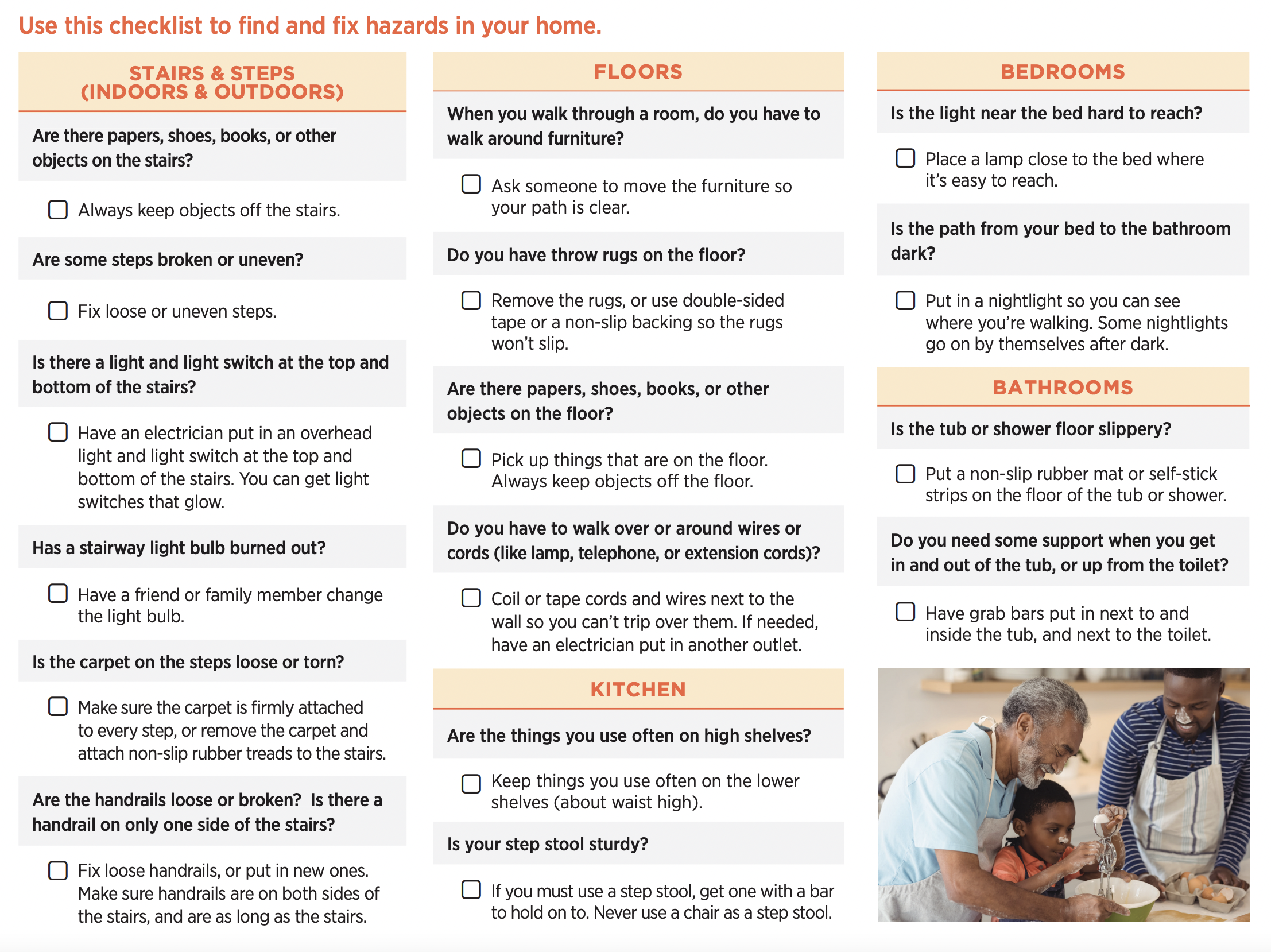Top Guidelines Of Dementia Fall Risk
Table of ContentsThe Best Guide To Dementia Fall RiskOur Dementia Fall Risk StatementsThe 4-Minute Rule for Dementia Fall RiskThe Facts About Dementia Fall Risk Uncovered
A loss risk assessment checks to see just how most likely it is that you will certainly fall. The analysis usually consists of: This consists of a series of inquiries regarding your total health and wellness and if you've had previous drops or issues with balance, standing, and/or walking.Treatments are referrals that may reduce your threat of dropping. STEADI includes 3 steps: you for your danger of falling for your risk aspects that can be enhanced to attempt to protect against drops (for example, balance troubles, damaged vision) to decrease your threat of dropping by using reliable strategies (for instance, supplying education and resources), you may be asked numerous concerns including: Have you dropped in the past year? Are you stressed about dropping?
After that you'll take a seat once more. Your company will inspect the length of time it takes you to do this. If it takes you 12 seconds or even more, it may indicate you go to higher threat for an autumn. This examination checks strength and equilibrium. You'll sit in a chair with your arms went across over your upper body.
Relocate one foot midway onward, so the instep is touching the huge toe of your various other foot. Relocate one foot totally in front of the other, so the toes are touching the heel of your various other foot.
The 2-Minute Rule for Dementia Fall Risk
Many falls happen as a result of multiple contributing elements; therefore, managing the threat of dropping begins with identifying the elements that add to fall danger - Dementia Fall Risk. A few of one of the most pertinent risk factors consist of: Background of previous fallsChronic clinical conditionsAcute illnessImpaired gait and equilibrium, reduced extremity weaknessCognitive impairmentChanges in visionCertain high-risk drugs and polypharmacyEnvironmental factors can also raise the danger for falls, including: Inadequate lightingUneven or damaged flooringWet or unsafe floorsMissing or damaged hand rails and order barsDamaged or poorly equipped devices, such as beds, mobility devices, or walkersImproper use assistive devicesInadequate guidance of the people staying in the NF, consisting of those that display aggressive behaviorsA effective fall risk management program requires a complete clinical assessment, with input from all participants of the interdisciplinary team

The care plan ought to additionally consist of treatments that are system-based, such as those that promote a risk-free setting (appropriate lighting, handrails, grab bars, and so on). The performance of the interventions ought to be reviewed regularly, and the care plan changed as needed to reflect changes in the loss risk evaluation. Executing a loss threat monitoring system making use of evidence-based best method can reduce the frequency of drops in the NF, while restricting the capacity for fall-related injuries.
Some Known Factual Statements About Dementia Fall Risk
The AGS/BGS standard recommends evaluating all grownups matured 65 years and older for loss threat each year. This testing is composed of asking patients whether they have fallen 2 or why not try this out even more times in the previous year or looked for clinical attention for an autumn, or, if they have not fallen, whether they really feel unstable when strolling.
Individuals that have fallen as soon as without injury should have their equilibrium and gait evaluated; those with gait or equilibrium problems need to obtain additional evaluation. A history of 1 fall without injury and without gait or equilibrium issues does not require additional analysis beyond continued yearly autumn danger screening. Dementia Fall Risk. A fall danger evaluation is required as component of the Welcome to Medicare assessment

Dementia Fall Risk - Questions
Recording a falls history is among the top quality signs for fall avoidance and administration. A vital component of danger evaluation is a medicine testimonial. Numerous classes of drugs increase fall threat (Table 2). click over here copyright medications particularly are independent forecasters of falls. These medications often tend to be sedating, change the sensorium, and impair balance my review here and stride.
Postural hypotension can frequently be minimized by lowering the dose of blood pressurelowering drugs and/or stopping medicines that have orthostatic hypotension as a negative effects. Use of above-the-knee assistance hose pipe and resting with the head of the bed raised may also decrease postural decreases in blood stress. The recommended aspects of a fall-focused physical evaluation are displayed in Box 1.

A TUG time greater than or equal to 12 seconds recommends high autumn danger. The 30-Second Chair Stand test evaluates lower extremity strength and equilibrium. Being unable to stand from a chair of knee height without using one's arms indicates enhanced fall threat. The 4-Stage Equilibrium examination evaluates fixed equilibrium by having the patient stand in 4 positions, each progressively extra difficult.